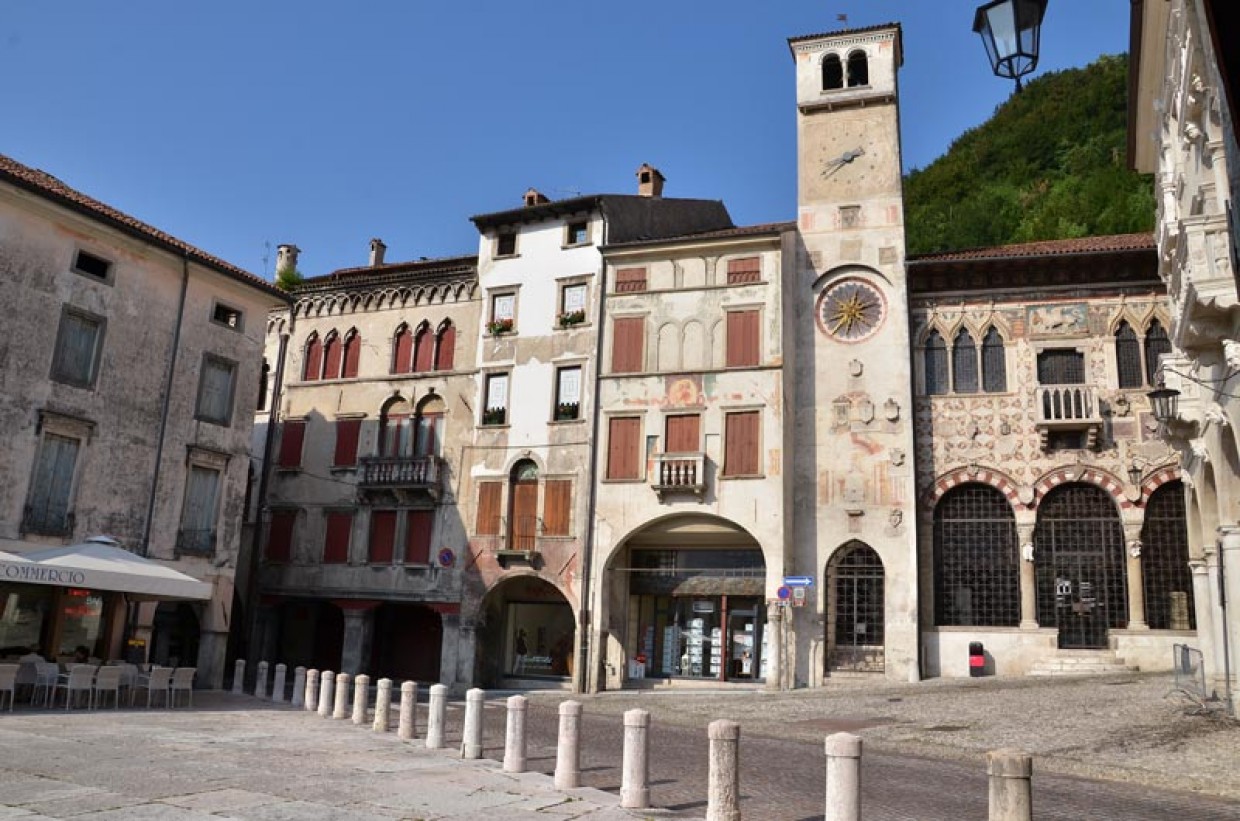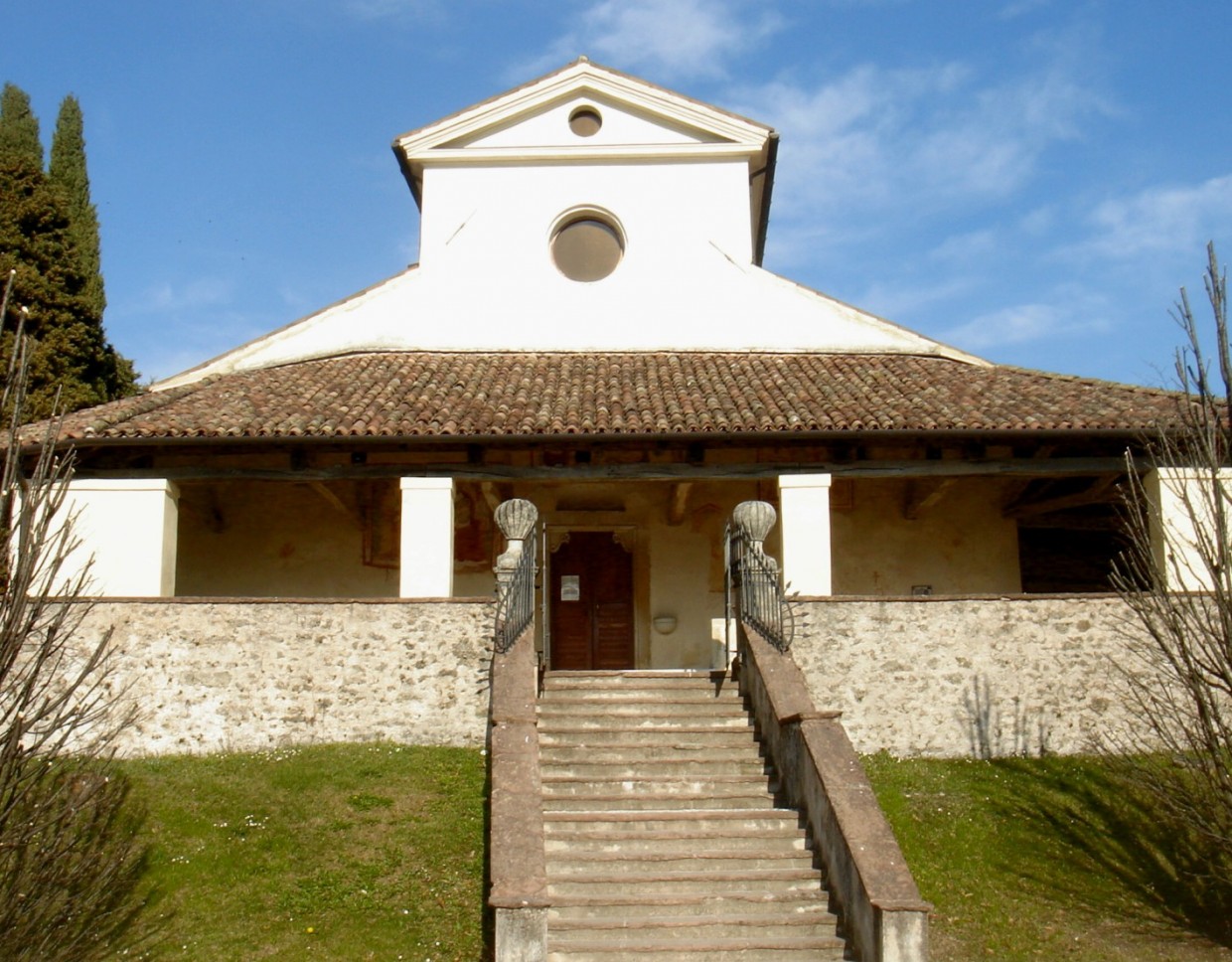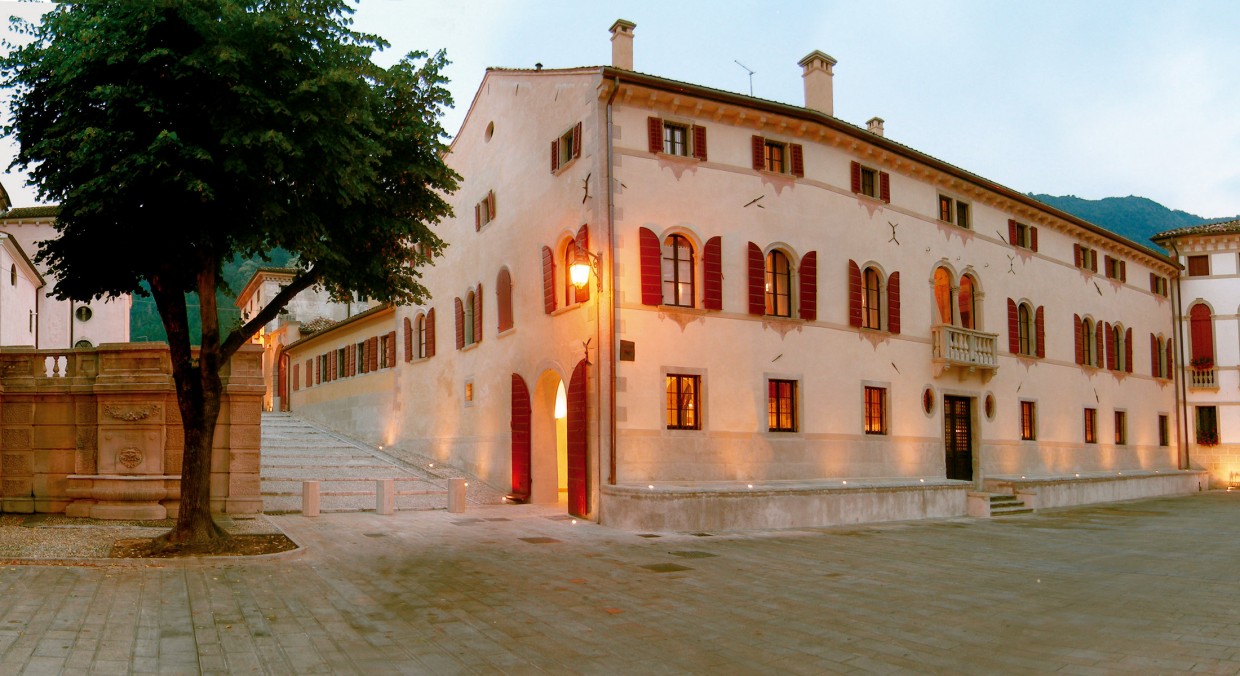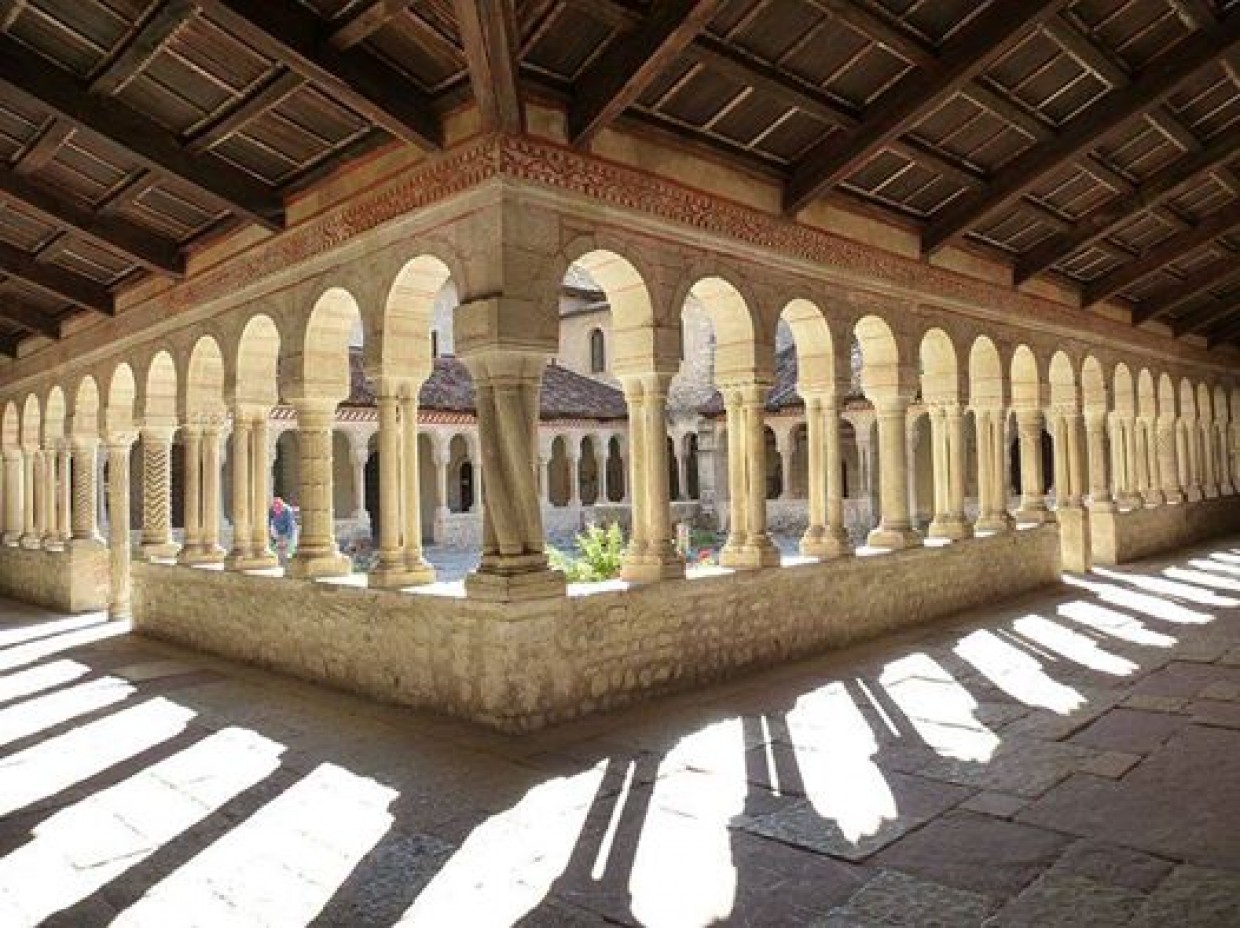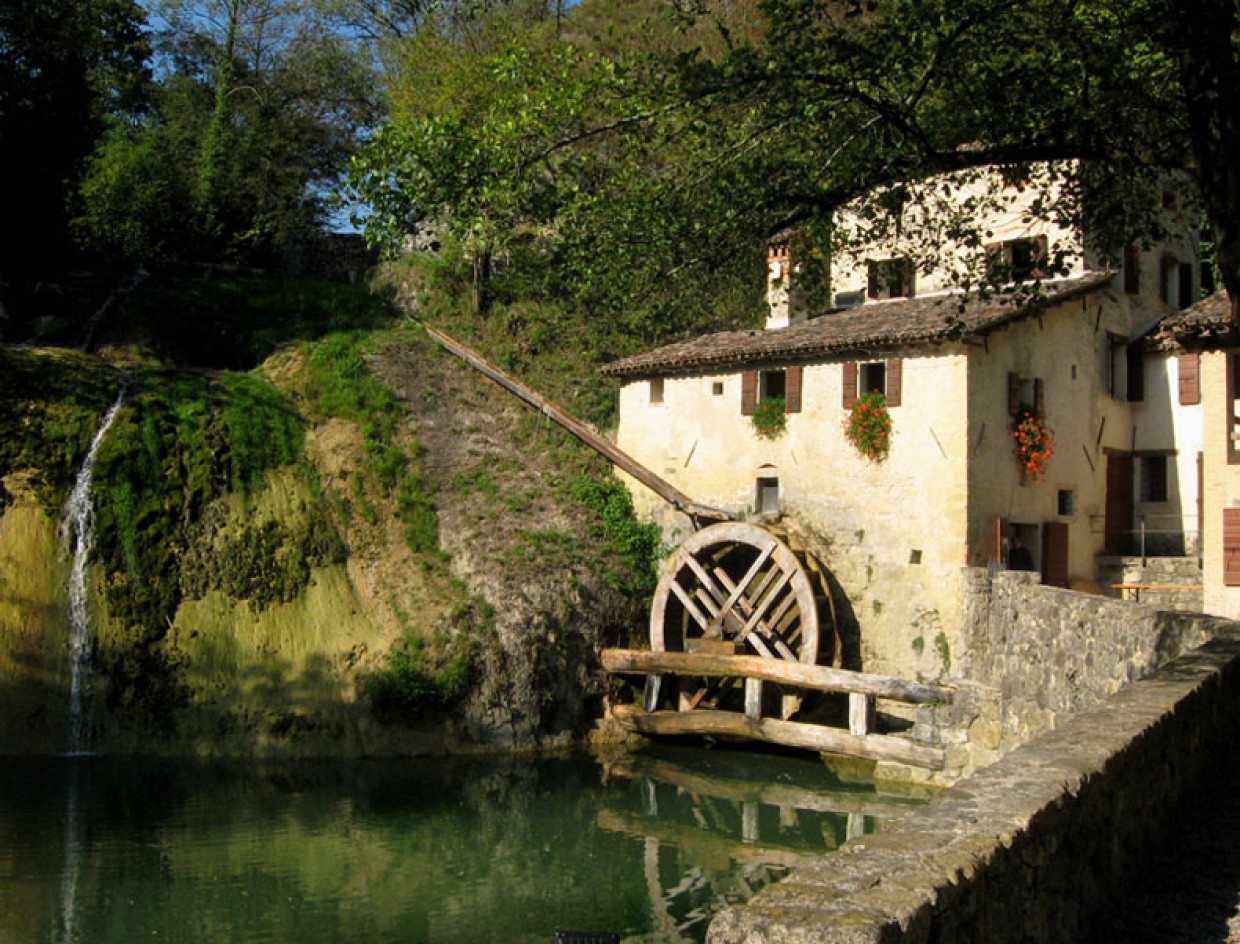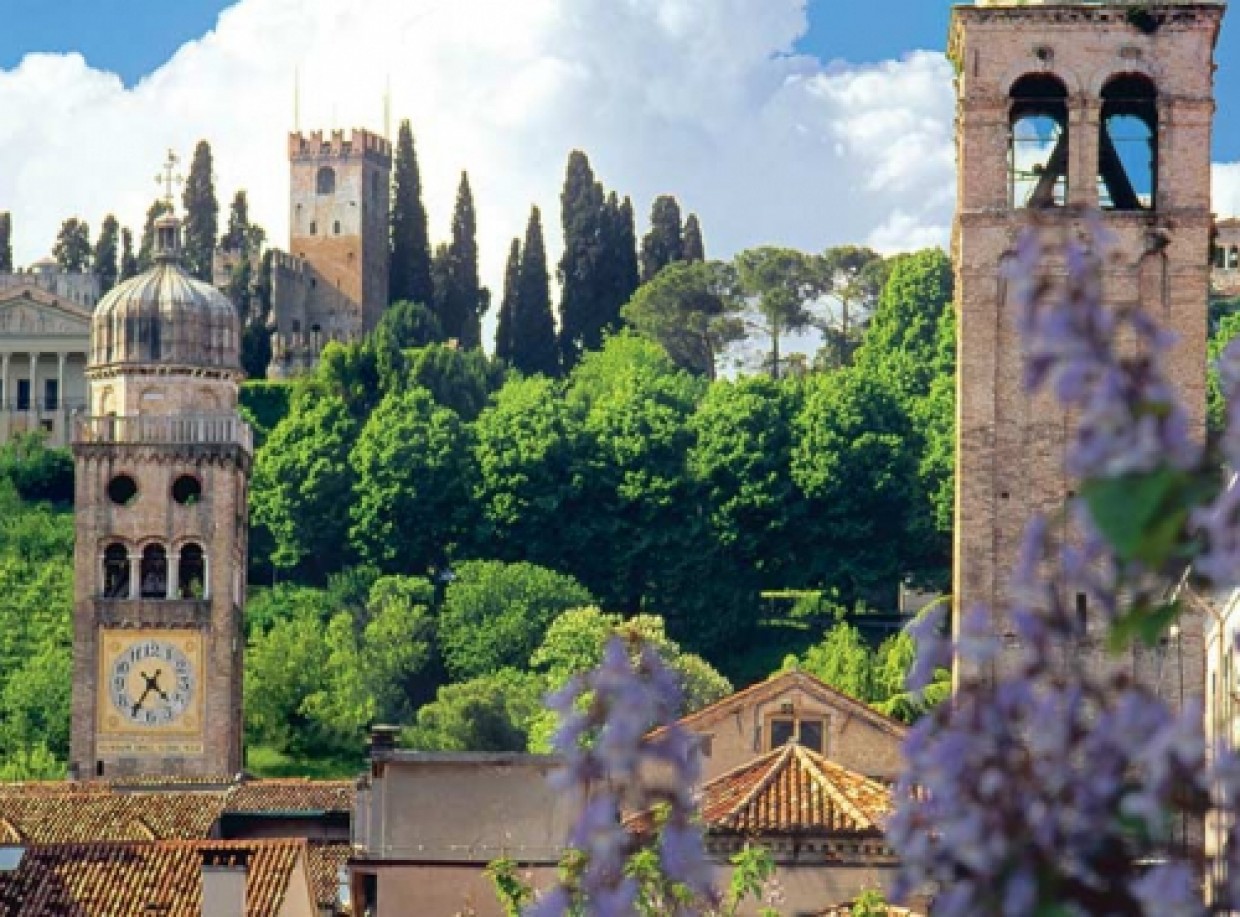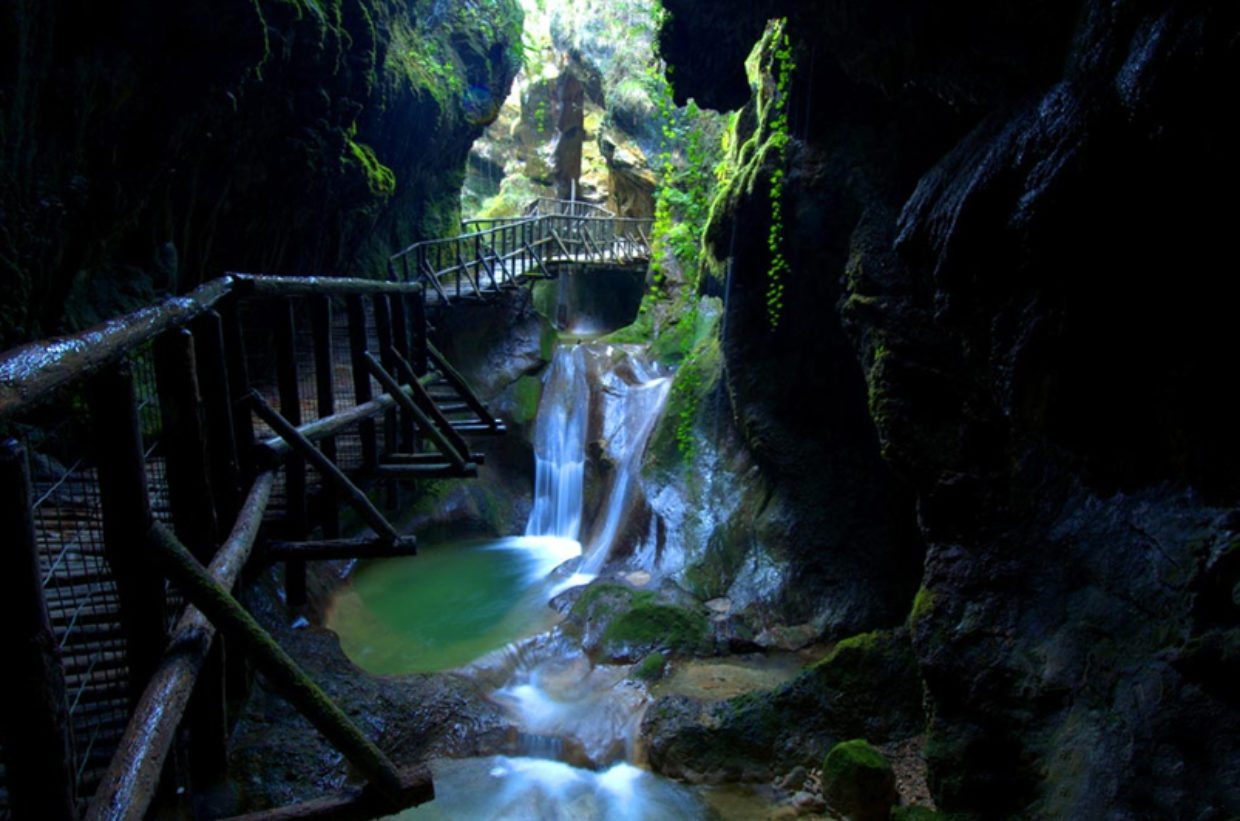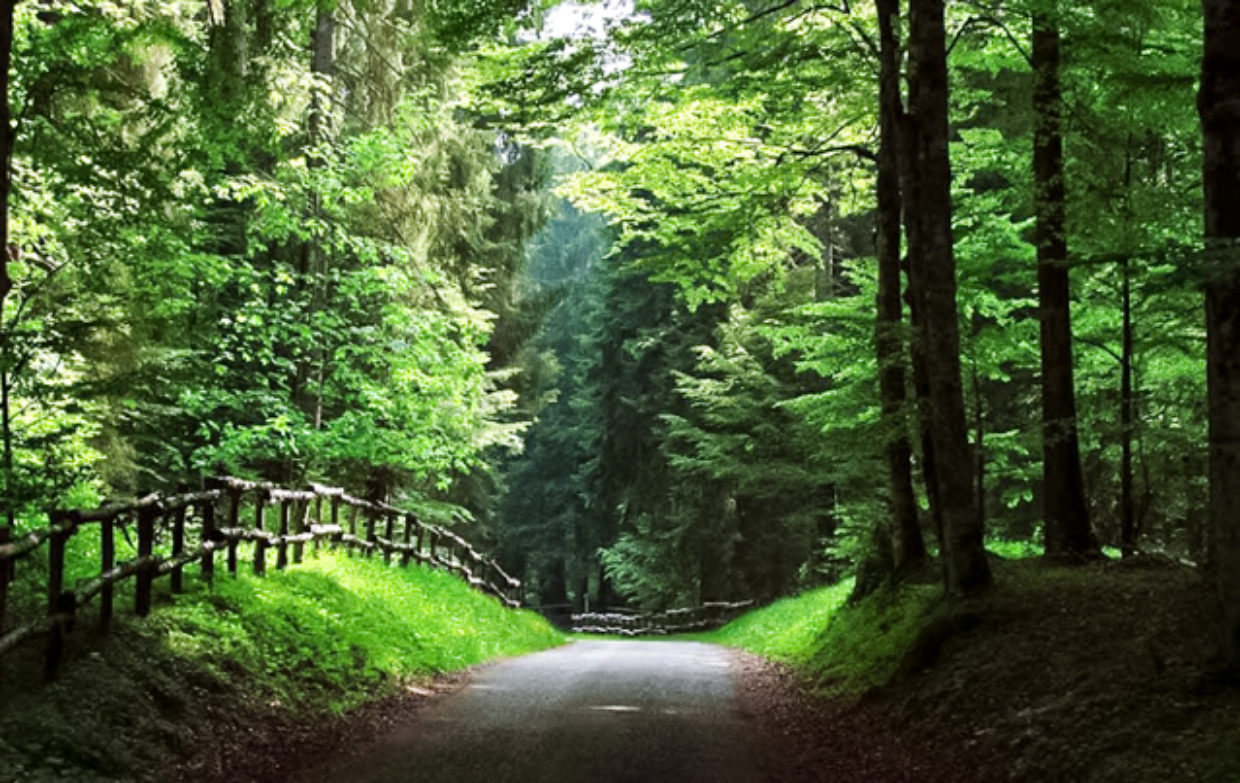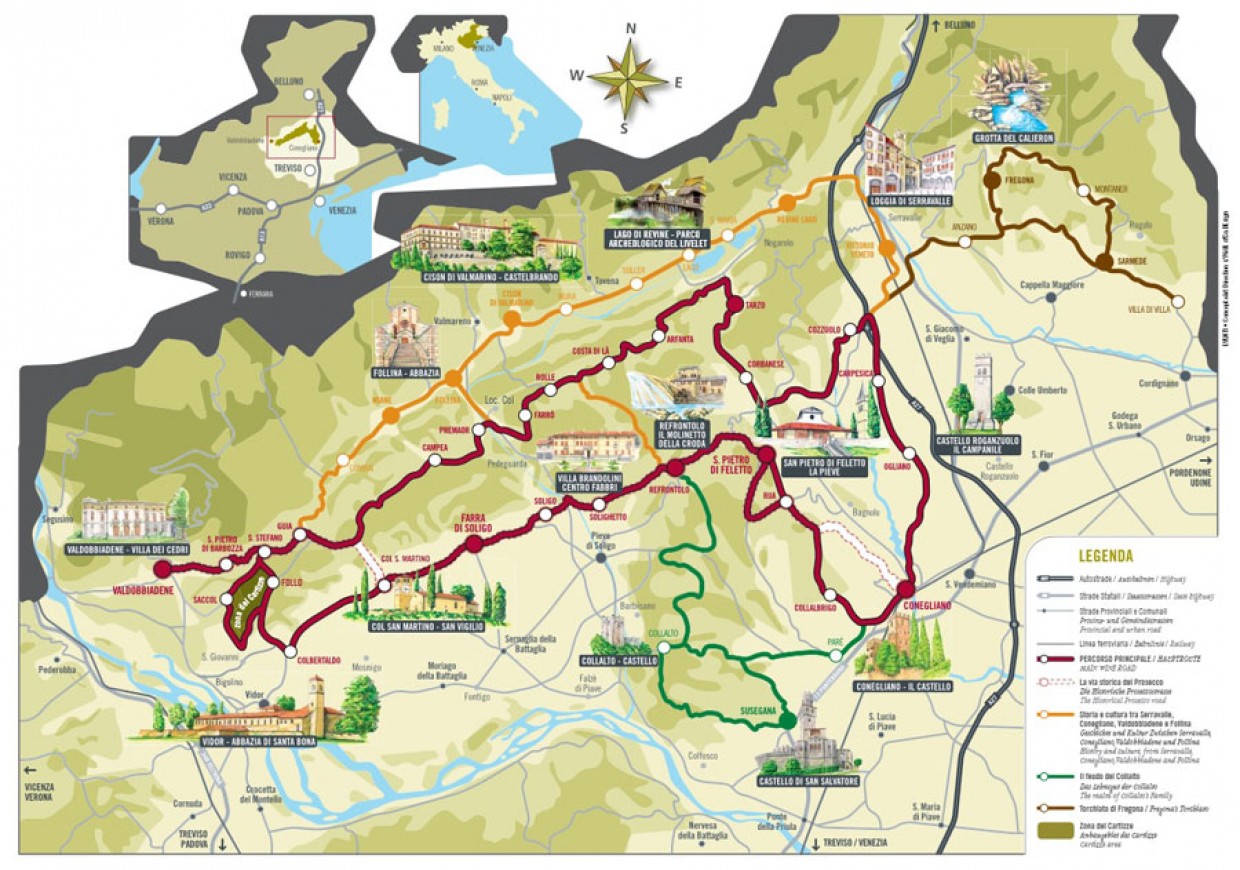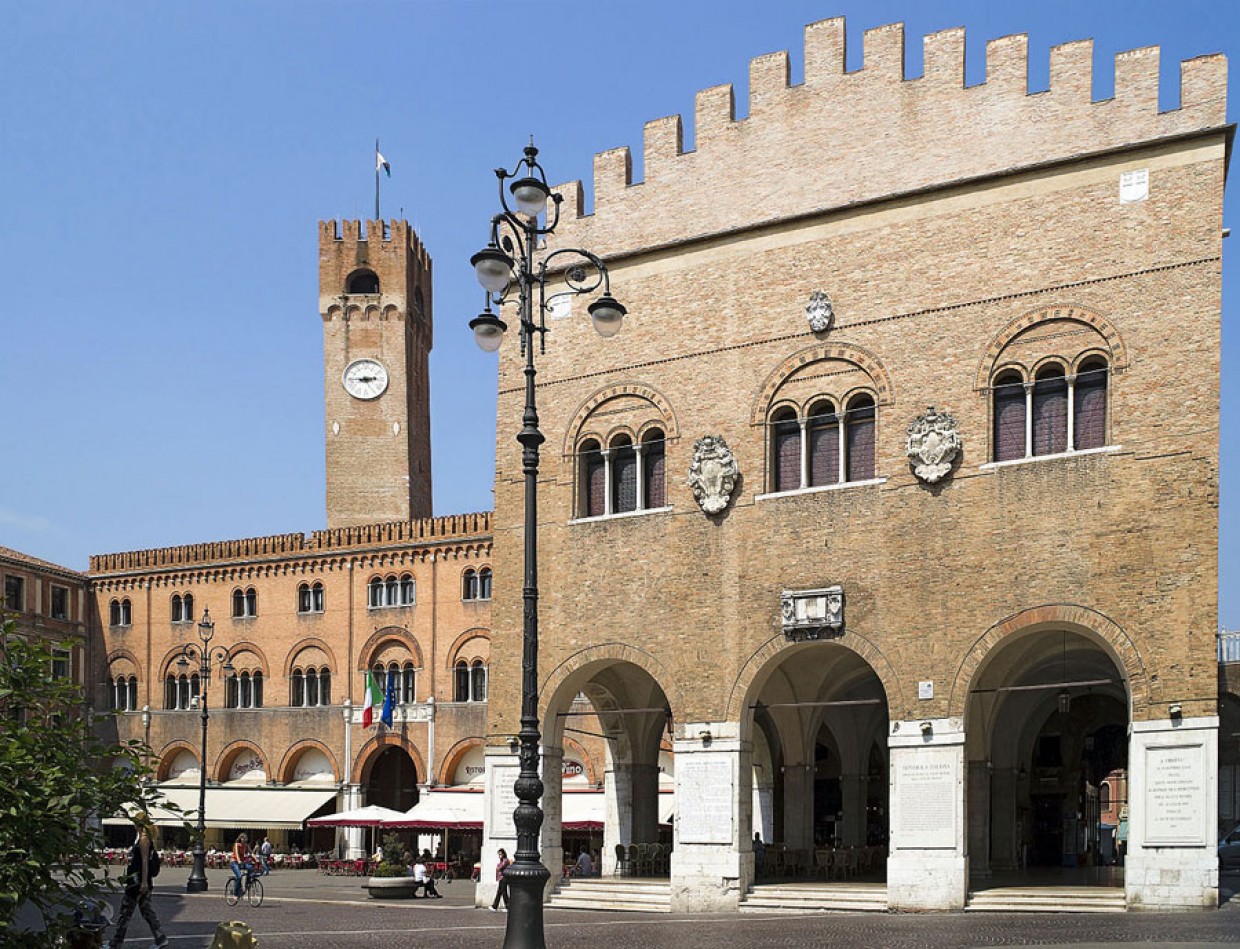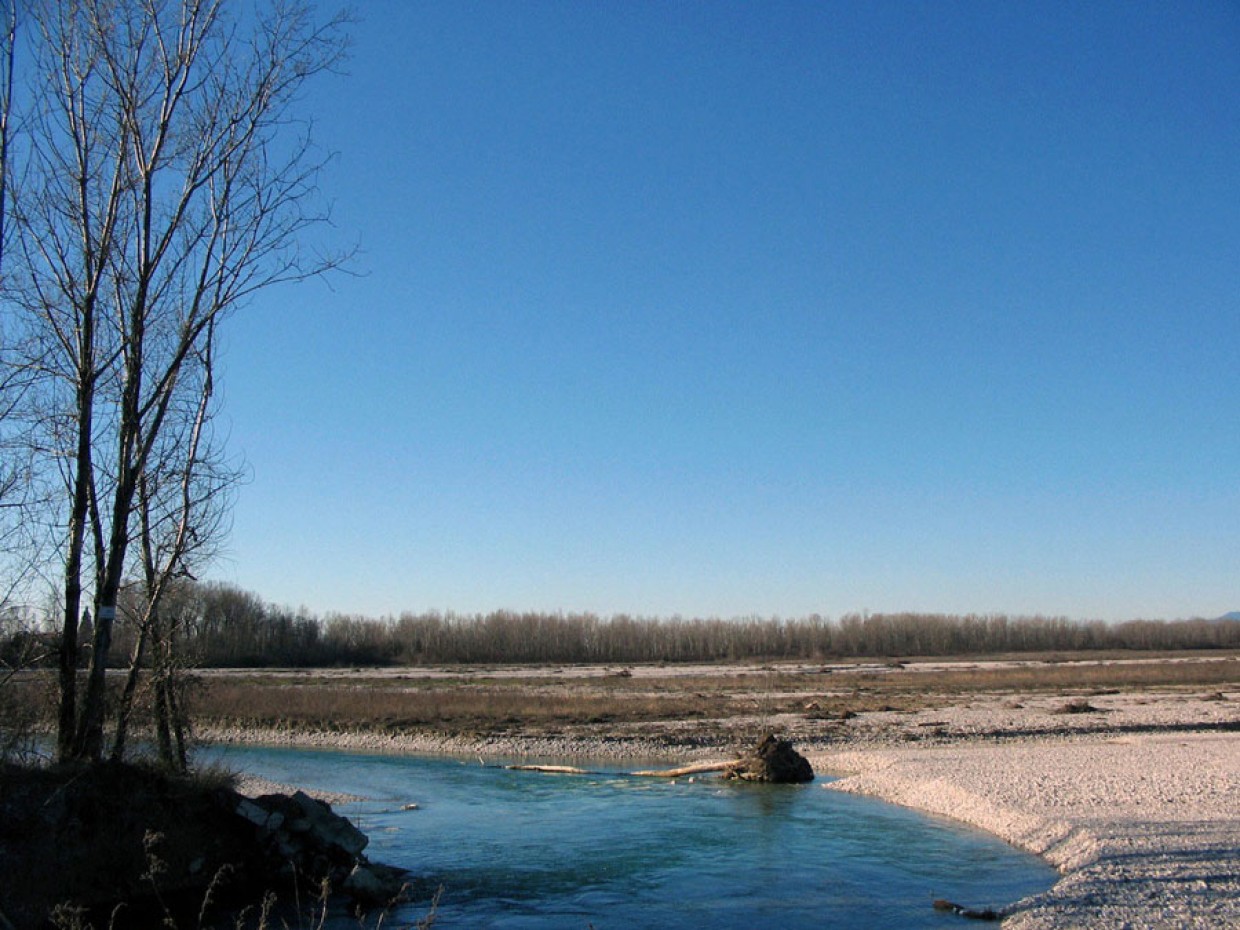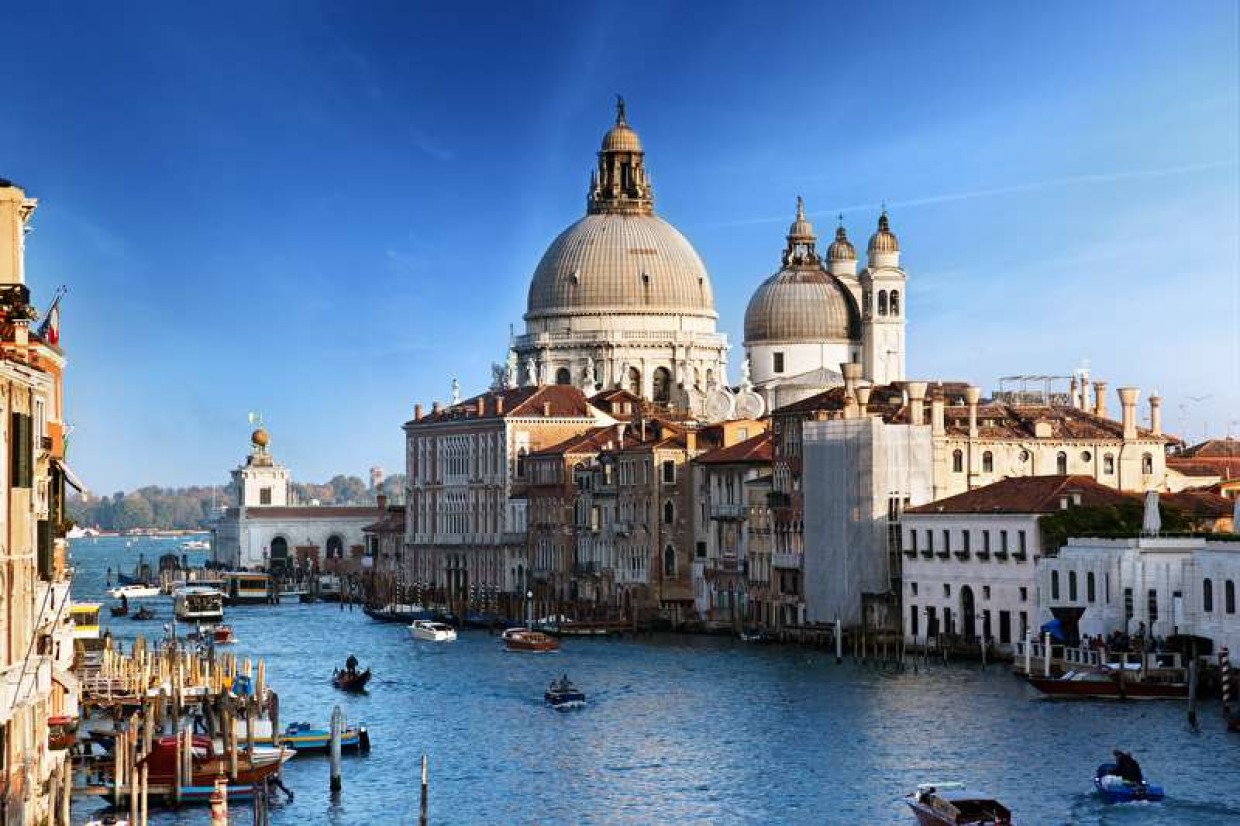Vittorio Veneto (8 km)
Vittorio Veneto is a small town founded in 1866 by the merger of the two ancient towns of roman origin, Ceneda and Serravalle. Situated at the feet of the Belluno Pre Alps it is an obligatory point of passage between the plains and the cadore. The name derives from King Vittorio Emanuele II and was modified to Vittorio Veneto after the first world war (1923), in memory of the victory.
Ceneda in the seventh century was an important Lombard Duchy. Serravalle is found at the tightest point of the Meschio Valley; in 1174 it became a fief of the Da Camino family.
San Pietro di Feletto (10 km)
San Pietro Di Feletto owes its name to the latin word for fern (filix) present in the surrounding woods and has a history that dates back to the Lombard period, when the church of San Pietro was built. It soon became a powerful church being the only one to have the privilege of a baptismal font, decorated with frescoes at the end of the 15th century. The porch, which guaranteed shelter to the common people during the course of the meeting, as well as offering a beautiful view of the hills below, attracts interest due to the famous fresco of “Christ On Sunday”; an image giving a clear warning not to work on Sunday.
The bell tower from the 14th century is in a secluded position and was inspired by that of Aquileia. The external staircase towards the main road was built in the 19th century.
Cison di Valmarino (10 km)
Cison Di Valmarino is situated on the Via Claudia Augusta Altinate, that in roman times connected Altino to Germany. It took shape during the barbarian invasions, the period in which the nucleus of Castelbrando can be dated back to, and which was under the rule of the Lombards; whose influence was extremely strong over all the surrounding area.
In 1421, Valmarino came under the rule of the mayor of Venice for some years until it was entrusted to the doge and governors Gattamelata and Brandolino of Bagnacavallo. It was then passed to their descendants known as Brandolini and then Brandolini D’Adda, who kept Valmareno until 1797, when the Venetian Republic fell into the hands of Napoleon. In 1800, it became part of the Lombardo Venetian Kingdom and therefore a crown land of the Austrian Empire.
Follina (13 km )
Follina is famous for its Cistercian Abbey, an architectural gem that has been beautifully preserved. It was built in the mid-1100s by Benedictine monks, who were later replaced by the Cistercian monks that started making woollen cloth. The economy produced, enabled the families of Follina to build exquisite buildings that can be admired in the historic centre: Barberis Rusca Palace, Bernardi Palace, Tandura Palace and the former wool factory Andretta from the 19th century, which is a notable example of industrial archaeology.
Molinetto della Croda at Refrontolo (14 km)
A 12 metre high waterfall drives the wheels of this 16th century antique water mill, it consists of a small building in stone and wood, leaning against a rocky ridge. The mill is open to the public and inside you can see the workings of the mill and the living quarters.
Conegliano (15 km)
Conegliano immediately invites the visitor to walk through the archways of Contrada Grande; where you can admire the facades of noble palaces, the extraordinary beauty of the frescoes on the facade, of the cathedral, and the castle in the background. It is right at the foot of the latter that we find the historic wine institute Cerletti and where the Strada del Vino (the wine road) begins. Before embarking on the richness of the surrounding territory, it is recommended to visit the 19th century wine workshop of the enological school, completely covered by frescoes.
The Caves of Caglieron (16 km)
The caves are composed of a series of cavities, whose origins are partly artificial and partly natural; as for the natural part, it is a deep gorge carved by the Caglieron stream on alternating layers of calcareous conglomerate, sandstone and marl dating back to the Middle Miocene (from 16 to 10 million years ago).
At the beginning of the route we can visit the artificial cavities where the sandstone used to be extracted, also called “pietra dolza”, since it was very easy to work with. The detachment of the material was made by blocks, using chisels whose signs are still visible along the walls. To avoid collapses, sloping columns were left to support the vault.
Through a comfortable wooden walkway you can see the natural and most interesting part of the Caglieron Caves: an incredible gorge made of waterfalls, tumultuous waters, stalactites and stalagmites. The path is a hundred meters long.
The itinerary is well illustrated thanks to the descriptive panels and the site can be visited in every season.
In winter the magic of the frozen waterfalls is unique, and in summer the visit is pleasant and relaxing while enjoying the colors of the vegetation and the sweet din of the water.
Admission is free and the caves can be visited until sunset.
The Forest of Cansiglio (20 KM)
The Altopiano of Cansiglio, in the Carnic Prealps located between the provinces of Belluno, Treviso and Pordenone, is an unspoiled paradise set in a natural basin that dominates the Veneto-Friuli plain, surrounded by hills covered with beautiful beech and fir forests.
A place in some ways sour, whose karstic nature is manifested in the presence of extremely charming dolines, sinkholes and chasms.
The Cansiglio, where hunting has been banned for some time, offers shelter to many animal species. The easiest mammals to spot, especially at dusk, are deer, roe deer and fallow deer.
It has been inhabited since ancient times, offering surprises also for those who love history and local traditions and offering a range of sports activities in addition to trekking, such as golf, horse riding, mountain biking.
The hiking trails are all well marked. Among these, a particular beautiful itinerary is the one running through the Taffarel forest, a spectacular trail that crosses a wide area of the Biogenetic Natural Reserve Campo di Mezzo-Pian Parrochia.
Prosecco Road (6 km)
On the hills between Conegliano and Valdobbiadene there is a road that produces great wines and typical local products.
The landscape not only offers attractions relating to wine, but it is also historically and artistically rich, so as to establish the soul and the deep matrix of the territory.
Along the 120km of road between the hills of Conegliano and Valdobbiadene, the vineyards are uninterrupted and alternately adjoined by towns and villages with medieval remains, monasteries, ancient churches, as well as traces of rural, civil and religious history.
Treviso (54 km)
It is no coincidence that Treviso is called “Little Venice”; the Sile River and a maze of channels run through it making it even more beautiful and lively. The town offers little treasures, including: its archways, the churches and buildings which are wonderfully painted and decorated and the picturesque squares. The centrepiece of the city is Plazza Del Signori, overlooked by the 14th century palace with its frescoed loggia. Here starts the splendid street of Calmaggiore that leads us to the Piazza Duomo. The area know as the fish market is rich in channels and nice bars for an ‘aperitivo’, whereas Buranelli is an ideal spot for those looking to take a romantic walk.
Piave RIVER (60 km)
The Piave is a ‘living’ river with a long history of wars, invasions, fortunes, famines, droughts and floods. It has been the engine of a fertile economy because it was a means to transport food and materials, vital for all crafts; agricultural and commercial. It surfaces in a large loop from the promontory of Montello, arriving to the plains and then continuing for about 50 kilometres down to the Adriatic Sea. Along its path, there are Venetian villas, archaeological sites, farmland and vineyards. The strong agricultural vocation of the territory is one of the strongest points of attraction.
Venice (83 km)
What can we say about Venice, an exceptional example of architecture, art, history and creative genius? Venice was one of the maritime republics that marked important milestones in the history of Italy and the world. It is an open-air museum: The Basilica of San Marco, The Rialto bridge, The Ghetto, Palazzo Ducale, The Grand Canal, The Gallerie Dell’Accademia, Gran Teatro La Fenice, San Rocco Church, the Basilica of Santa Maria Gloriosa dei Frari, Cafe Florian, Palazzo Grassi and Fontego of the Turks are only a few of some of the infinite points of interest in an extraordinary, unique city.






